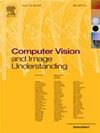Light-YOLO:一种轻型高性能网络,用于探测夜间道路上的小障碍物
IF 3.5
3区 计算机科学
Q2 COMPUTER SCIENCE, ARTIFICIAL INTELLIGENCE
引用次数: 0
摘要
为了解决小障碍物检测和模型可移植性的挑战,本研究提出了一种轻型、高精度、高速的夜间道路环境小障碍物检测网络,称为Light-YOLO。首先,引入SPDConvMobileNetV3特征提取网络,在显著减少参数总数的同时,增强了捕获小障碍物细节的能力。接下来,为了使网络更专注于夜间条件下的小障碍物,我们加入了一个名为Wise-IoU的损失函数,它更适合于低质量的图像。最后,为了在不增加参数总数的情况下提高模型的整体性能,集成了一种无参数注意机制(SimAM)。将公开数据与自建数据集进行对比,实验结果表明,Light-YOLO在保持较高图像处理速度的同时,平均精度(mAP50)达到97.1%。此外,与同一系列的其他高级模型相比,Light-YOLO具有更少的参数,更小的计算负载(GFLOPs)和更小的模型权重(Best.pt)。总体而言,Light-YOLO在轻量化设计、精度和速度之间取得了平衡,使其更适合硬件受限的设备。本文章由计算机程序翻译,如有差异,请以英文原文为准。
Light-YOLO: A lightweight and high-performance network for detecting small obstacles on roads at night
To address the challenges of detecting small obstacles and model portability, this study proposes a lightweight, high-precision, and high-speed small obstacle detection network at nighttime road environments referred to as Light-YOLO. First, the SPDConvMobileNetV3 feature extraction network is introduced, which significantly reduces the total number of parameters while enhancing the ability to capture small obstacle details. Next, to make the network more focused on small obstacles at nighttime conditions, a loss function called Wise-IoU is incorporated, which is more suitable to low-quality images. Finally, to improve overall model performance without increasing the total number of parameters, a parameter-free attention mechanism (SimAM) is integrated. By comparing the publicly available data with the self-built dataset, the experimental results show that Light-YOLO achieves a mean average precision () of 97.1% while maintaining a high image processing speed. Additionally, compared to other advanced models in the same series, Light-YOLO has fewer parameters, a smaller computational load (GFLOPs), and reduced model weight (Best.pt). Overall, Light-YOLO strikes a balance between lightweight design, accuracy, and speed, making it more suitable for hardware-constrained devices.
求助全文
通过发布文献求助,成功后即可免费获取论文全文。
去求助
来源期刊

Computer Vision and Image Understanding
工程技术-工程:电子与电气
CiteScore
7.80
自引率
4.40%
发文量
112
审稿时长
79 days
期刊介绍:
The central focus of this journal is the computer analysis of pictorial information. Computer Vision and Image Understanding publishes papers covering all aspects of image analysis from the low-level, iconic processes of early vision to the high-level, symbolic processes of recognition and interpretation. A wide range of topics in the image understanding area is covered, including papers offering insights that differ from predominant views.
Research Areas Include:
• Theory
• Early vision
• Data structures and representations
• Shape
• Range
• Motion
• Matching and recognition
• Architecture and languages
• Vision systems
 求助内容:
求助内容: 应助结果提醒方式:
应助结果提醒方式:


